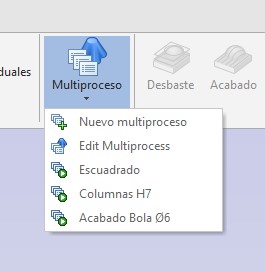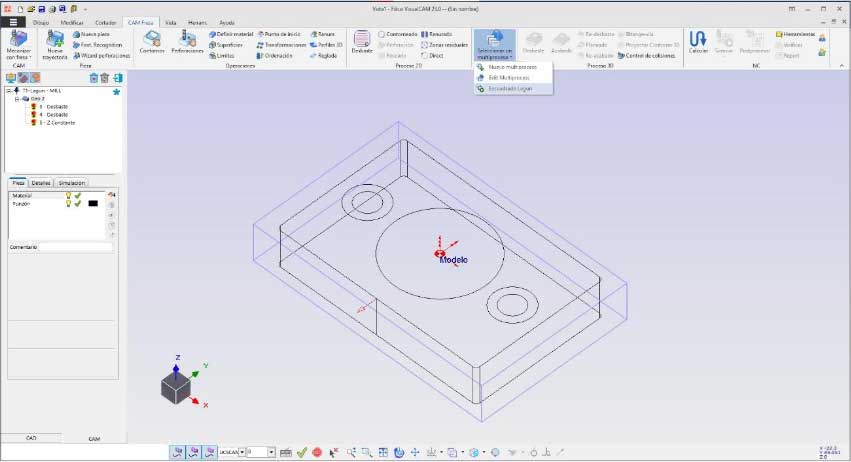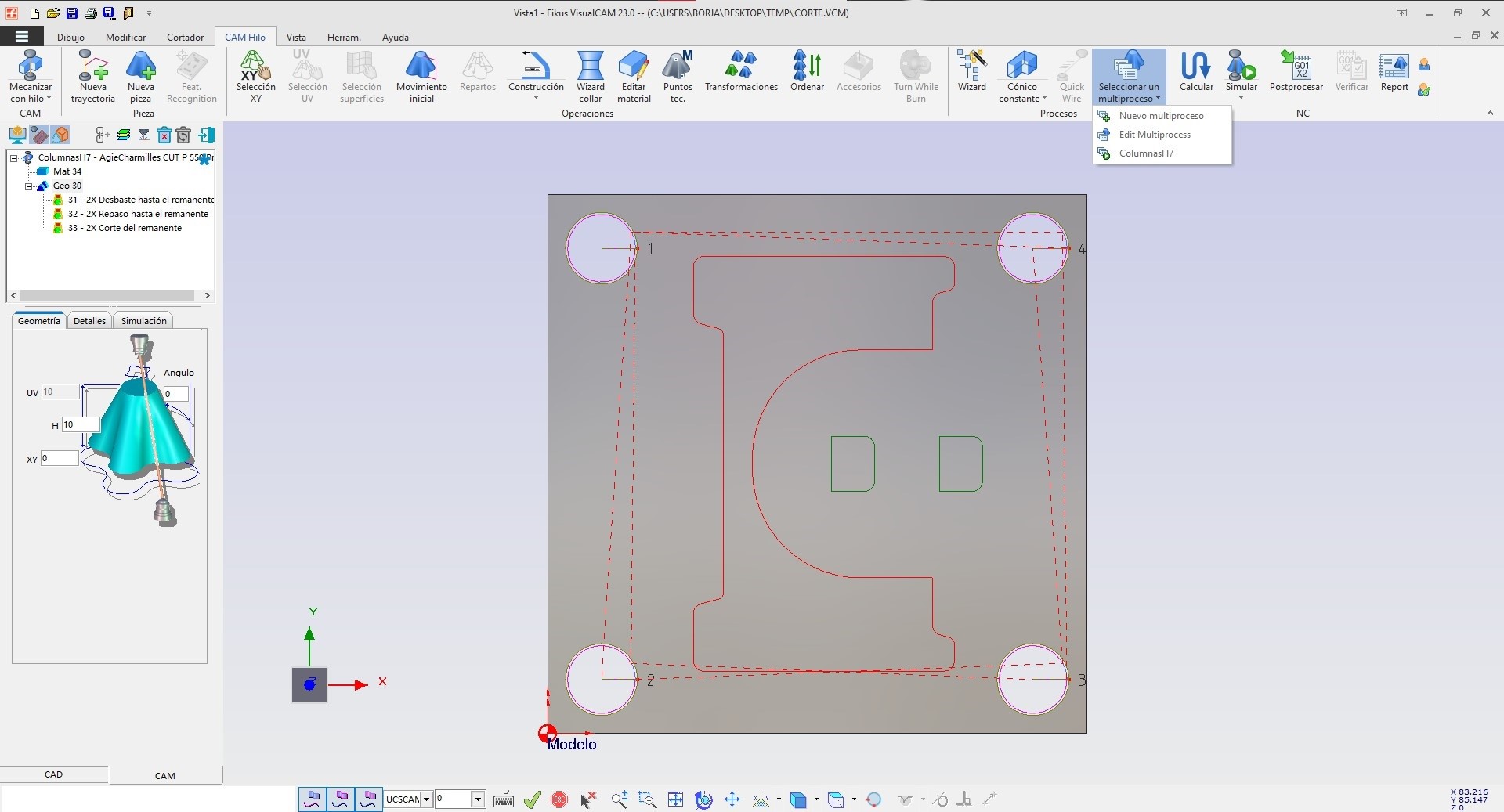CAD/CAM automation through multi-processing: the key to efficiency in Industry 4.0
When we talk about automation in industry 4.0, we talk about both time savings on CNC machining centers and specialized CAD CAM software solutions. Time savings on machines often come from systems that have been automated, either because machine tools are able to perform more processes automatically, without operator intervention, or because CAD/CAM software includes aids to automate the part programming flow.
One of the most important tools to automate programming is to have customizable templates into which technicians can pour their knowledge for optimal machining of different types of parts and materials. This type of template makes it possible to speed up the programming of similar parts in the future, as it may only be necessary, perhaps, to make some adjustments to obtain an optimum machining process that has already been tested.
This integration optimizes the workflow, from conceptual design to final production, with a significant impact on efficiency, quality and profitability.
Muti-process templates
Multi-process templates allow us to save all the machining processes with all the information that we have configured in each one of them so that, when we are going to create a new part, we only have to insert the machining processes that we believe convenient and select the contours of the new part.
The availability and use of multi-process templates allows us to carry out machining programs in a matter of seconds ensuring that we apply processes adapted to our preferences and needs, thus guaranteeing safety and efficiency at every step.
Benefits of CAD/CAM multi-process automation
- Cycle time reduction: Automating repetitive tasks frees design and manufacturing engineers to focus on more strategic and creative activities.
- Greater precision and quality: Automation minimizes human error and ensures consistency in production.
- Increased productivity: Automation enables higher production in less time, which translates into increased efficiency and profitability.
- Improved traceability and control: Automation facilitates the monitoring and control of processes, enabling better quality management and decision making.
- Cost reduction: Automation can significantly reduce production costs, both in labor and materials.
Drop-down multiprocess menu

Multi-process templates in milling machine programming
For milling machining multi-process templates are very versatile because we can save an entire machining operation, or save it in parts, that is, if we in our company use tool sets depending on the size of the workpiece or even depending on the machine to which the machining program is addressed, we will be able to save the sets separately and when we are going to create a piece, select the ones that best suit our needs.
Likewise, we can do it with all types of tools and assemblies, for example, squaring the part, roughing from major tool to minor, ball finishing from major to minor with residual areas, drilling with tapping, drill, milling cutter and countersinking, etc.
The multi-process templates available in both Fikus ST and FikusPlus give us unprecedented programming versatility, because no matter the part we have, we can always set up our machining with all the parameters of the tools we work with, and simply select the contours of the new part, creating a machining program in seconds.
The multiprocess will save all the configuration of the processes:
- Respect the machining order
- Tools used
- Cutting speed
- Side and vertical pass
- Machining offset
- Internal or external coolant
- And all the extra machining options
The image shows the multi-process called 'Lagun Squaring' which is composed of planing, roughing of the exterior and an exterior contouring

Multi-process templates in wire EDM programming
In wire EDM technology, multi-processes are just equally effective, allowing us to create precise and efficient machining programs in a very agile way in this complex technology. In wire EDM programming it is common to look for hundredths and even thousandths adjustments for which advanced specialized CAD/CAM programs are of great help.
A typical example of the application of multiprocess templates is when we want to achieve a specific adjustment. Once we have reached the desired setting, we generate a multiprocess template and, in this way, we guarantee that the next time we need to make that setting, simply by entering the multiprocess template, we will perform the machining with the perfect setting easily, avoiding wasted time searching for the right setting.
Fikus Visualcam is the leding solution in wire EDM and offers its users powerful multi-process templates that store all machining information:
- Wire type and diameter
- Material type
- Remnant Distance
- Threading and wire cutting after each process
- Start at the threading point and return to the threading point
- Security level
- Type of wire entry
- Corner treatment
Multi-process CAD/CAM automation is a powerful tool that enables companies in the manufacturing industry to improve their efficiency, quality, productivity and profitability. La implementación de estas estrategias puede marcar una diferencia significativa en la competitividad de una empresa en el mercado global.
The image shows a multi-process created for the H7 columns consisting of a roughing to remnant, reworking to remnant and cutting of the remnant.


